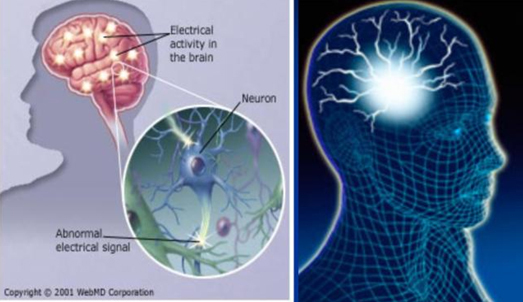 Milk is the perfect health food, right? It strengthens your bones, boosts your immune function, and helps you build a healthy, disease-free body. At least that’s what the dairy industry would like you to believe. The reality, however, is somewhat different. There’s no doubt that milk is the perfect food for a newborn child; however, for adults, milk consumption may actually do more harm than good.
Milk is the perfect health food, right? It strengthens your bones, boosts your immune function, and helps you build a healthy, disease-free body. At least that’s what the dairy industry would like you to believe. The reality, however, is somewhat different. There’s no doubt that milk is the perfect food for a newborn child; however, for adults, milk consumption may actually do more harm than good.
Not only do dairy foods such as milk contain proteins (e.g., casein) that can elicit opiod-like effects in the brain, hormones and bio-active peptides, and a lot of saturated fat, but a growing body of evidence also indicates that people who consume dairy foods on a regular basis have an elevated risk of developing osteoporosis and bone fractures.
Humans have no nutritional requirement for milk or any other dairy food
For the longest time, the dogma in nutrition has been that milk and other dairy foods strengthen your bones and enhance your protection against osteoporosis. Some dietitians and nutritionists may even go as far as to say that if you want strong bones, you have to consume dairy.
What the people who make this statement seem to forget is that milk was not a part of the original human diet. Prior to the Agricultural Revolution some 12.000 years ago, no humans anywhere consumed milk or any other dairy foods. Our hunter-gatherer forebears may have occasionally consumed the milk of the animals they killed, but as they didn’t keep livestock, they obviously didn’t drink milk or eat yogurt, butter, or any other dairy food on a regular basis.
This was how things were like throughout most of human evolution. Homo erectus, homo habilis, and other extinct hominin species, as well as the ancestors that came before them, didn’t consume dairy products. Rather, they lived on a diet of wild meats and plants. The fossil evidence indicates that these preagricultural humans were not only free of osteoporosis, but had strong, densely built bones (1, 2). Studies looking into the health and physical fitness condition of modern-day hunter-gatherers paint a similar picture (1, 3). These findings suggests that osteoporosis is a mismatch disease; a disease that is caused by a conflict between genes and environment.
With these facts in mind, it’s easy to see that the notion that humans have a nutritional requirement for dairy foods is nonsense. Some people carry lactase persistence alleles, and hence, don’t experience digestive distress when they consume milk. But this doesn’t mean that these people should necessarily consume milk, and it certainly doesn’t mean that they need milk. It just means that they are adapted to make use of the lactose found in milk and other lactose-containing dairy foods.
Remember, natural selection doesn’t select for health; it selects for reproductive success. Just because you’re able to digest a food without problem doesn’t necessaily mean the food in question is healthy for you.
Hip fracture rates are correlated with dairy intake
With the above facts in mind, let’s get back to the original question of this article: Does Milk Really Strengthen Your Bones?. In today’s post, I’m not going to take an in-depth look at the research on milk and osteoporosis. Rather, I wanted to focus on a paper that was recently published in Nature, entitled High osteoporosis risk among East Africans linked to lactase persistence genotype.
Here’s a quote from the abstract that explains the key findings of the study:
This ecological correlation study explores the marked differential in osteoporosis susceptibility between East and West Africans. African tsetse belt populations are lactase non-persistent (lactose intolerant) and possess none of the genetic polymorphisms carried by lactase persistent (lactose tolerant) ethnic populations. What appears paradoxical, however, is the fact that Niger-Kordofanian (NK) West African ethnicities are also at minimal risk of osteoporosis. Although East Africans share a genetic affinity with NK West Africans, they display susceptibility rates of the bone disorder closer to those found in Europe. Similar to Europeans, they also carry alleles conferring the lactase persistence genetic traits. (4)
Basically, what the study is saying is that osteoporosis is much more common among East Africans than West Africans, “despite” the fact that East Africans consume a lot of dairy foods while West Africans eat none.
Although interesting, this observation, by itself, doesn’t tell us that much about the relationship between dairy consumption and osteoporosis risk. Other confounding factors may be at play here. Perhaps the reason the bones of the East Africans are of inferior quality is that they on average exercise less than the West Africans, eat less vegetables, smoke more, or otherwise lead a less healthy life.
We need more data before we can make any firm conclusions. Luckily for us, the author of the above study didn’t stop when she was done investigating the African population; she went on to compare her findings with data from 40 countries in Africa, Europe, Latin America, North America, Asia, and Oceania. Here’s what the analyses showed:
Data showing the risk of osteoporosis to be 80 times higher among East Africans with higher levels of lactase persistence than lactase non-persistence West Africans are compared with global statistics. Hip fracture rates in 40 countries exhibit a high Pearson’s correlation of r=0.851, with P-value=0.000 in relation to dairy consumption. Lower correlations are seen for hip fracture incidence vis-à-vis lactase persistence, per capita income and animal protein consumption. Ethnic populations who lack lactase persistence single-nucleotide polymorphisms may be at low risk of developing osteoporosis. (4)
Translation: The incidence of hip fractures is higher among people who consume a lot of dairy than those who consume little dairy.
Does this mean that we can firmly conclude that dairy foods cause hip fractures? Not so fast… Remember, this is an observational study; it doesn’t prove a cause-effect relationship. That said, the study strongly refutes the idea that consuming milk and other dairy foods is the key to building strong and healthy bones. If milk and calcium enhance your protection against hip fractures, one would expect there to be a strong negative correlation between dairy intake and hip fracture incidence, not a strong positive one.
Other studies support the idea that we’ve been mislead by the dairy industry. For example, three meta-analyses, one from 2005, one from 2007, and one from 2011, found that there is no significant association between milk or calcium intake and hip fracture risk (5, 6, 7). This is not to say that you can’t find a study that shows otherwise, but as a whole, I think the evidence indicates that drinking milk is not the key to building strong bones.
Last words
Rather than providing us with stronger, more resilient bones, the addition of dairy to the human diet following the domestication of animals may actually have been the worst thing that has ever happened to our skeletons. At least according to Constance B. Hilliard, the author of the paper discussed in this post. Here’s what she had to say in a statement to the press:
Osteoporosis appears to have entered the human genome approximately 10,000 years ago with the advent of dairy farming. In a genetic trade off, those humans who received evolutionary advantages through expansion of the food supply with readily available dairy protein might also have genetically adapted their own calcium homeostasis in ways that disadvantage bone strength. (8)
Genetic trade-off may partly explain why the incidence of osteoporosis increased after the Agricultural Revolution; however, I don’t think it’s the whole story. Personally, I’m inclined to believe that it is a combination of genetic changes, reduced physical activity, increased dairy consumption, inflammation, and changes in the quality and composition of the human diet that has driven the increase in the incidence of osteoporosis and hip fractures over the past 10.000 years.
Does all of this mean that we should strictly avoid all dairy foods? Not necessarily. First of all, we have to remember that our modern diets differ from those our preagricultural ancestors consumed. Not only did the Paleolithic man consume a lot more vegetables (a source of calcium) than most contemporary humans, but he probably also got more calcium through the consumption of animal foods, due to the fact that he may have eaten some whole, completely unprocessed fish, insects, and terrestrial animals. Also, he may have chewed on the bones of the large animals he killed in order to extract all of the meat. Second, not all dairy foods are equally unhealthy. Eating a lot of dairy foods on a regular basis is probably not a good idea for anyone. However, a little grass-fed butter or homemade kefir every now and then is not going to do you much harm.



